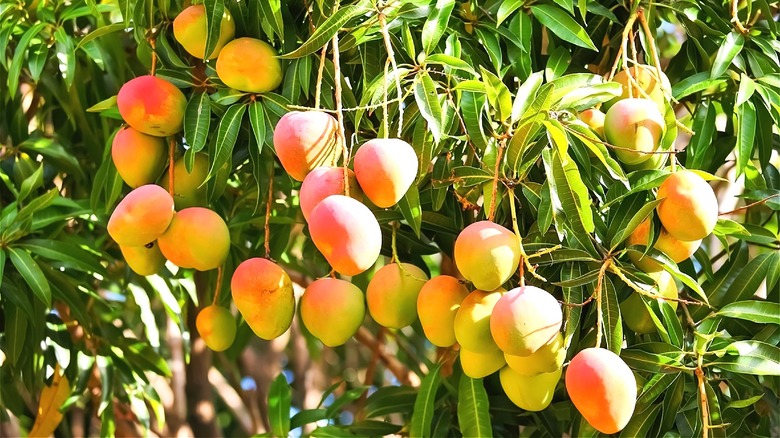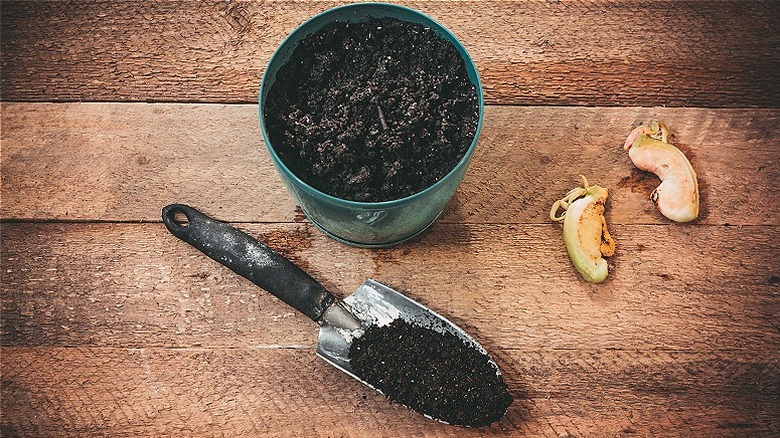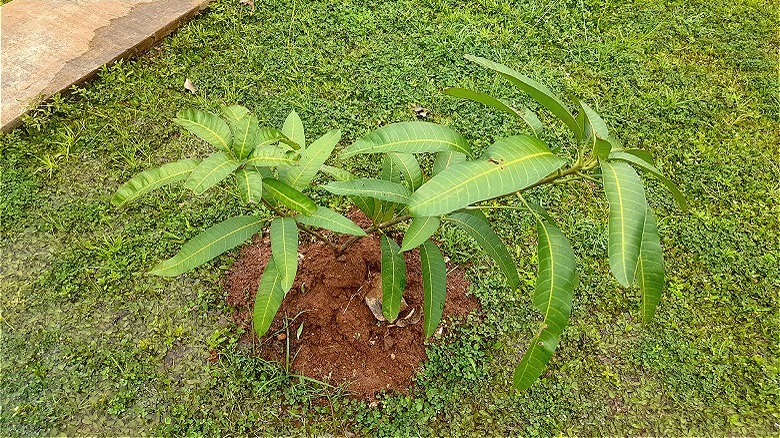The Easiest Way To Grow A Mango Tree From Seed
Most of us are content to let supermarket mangoes — grown oceans away — be the norm. But what if you could pluck this citrusy-sweet delight straight from your garden? Welcome to the realm of growing a mango tree from seed. Despite the endeavor's profound fruitfulness, it's not just a case of absent-mindedly burying a seed in the ground, hoping for it to sprout in its best form. It's a meticulously choreographed dance of devotion, demanding the mango seed be lovingly nurtured in a well-prepared environment, like a baby swaddled in warmth. That includes soil composition striking a perfect balance of nutrients, a watering routine mimicking a steady lullaby of rain, and consistent sunshine bathing.
Yet, even in this intricate dance, a need for calculated caution or creative alternatives exists. Fruit trees aren't fans of being crammed like sardines in a can. They need space to stretch, grow, and burst into their full, lush potential. But should your garden stubbornly fail to play ball, don't despair. There's always the option of nurturing a dwarf mango variety that comfortably fits in a container. Or when nurturing a seed to fruit feels like being asked to perform miracles? There's a cheater's guide: Get a grafted mango tree.
Steps to grow a mango tree from a seed
To grow a mango tree from seed, kick off the endeavor by assembling the necessary supplies: a fresh, ripe mango fruit; a knife; a sandwich bag; a paper towel; and a well-draining flower pot with a potting mix. So, how do you prepare a mango seed for planting? Clean the husk and let it sunbathe in a well-ventilated spot for two days until it's slightly hardened and easier to handle, then carefully pry it with a knife to release the seed. Wrap the seed in a kitchen paper towel and nestle the bundle in a sandwich bag. As for how to germinate mango seeds quickly, simply keep the package in a warm place. You should begin to see sprouts in about two or three weeks, after which you'll transplant the germinated seed into a container with fresh potting mix.
Keep the soil consistently moist, and nurture your mango youngling in filtered sunlight outdoors or near a sunlit south-facing window indoors. As soon as roots fill the pot, it's a cue to plant the young fruit tree in your garden (climate permitting). Prepare a hole as deep as (and two to three times wider than) the mango seedling's root mass in a sunny, well-drained spot shielded from wind and cold. Adding some nitrogen-rich compost can be likened to a nutrient-filled housewarming gift for your tree. Onto the grand finale: Settle the plant inside, backfill the hole, and sculpt a slight depression around the base to prevent water runoff.
Precautions, alternatives when growing a mango tree
When germinating your mango seed, a pot with nutrient-enriched garden soil and compost at a 70:30 ratio (or even a blend of perlite and coconut coir) can be used in place of the sandwich bag. Watering is often delicate art reminiscent of a Goldilocks scenario. Too much causes root rot, while too little triggers a horror-movie-worthy scene of shriveled leaves and dry stems. And while you're swaying to the rhythm of nature, don't forget to keep an eye on mango pests, including mealybugs, fruit flies, scale, and mango hoppers. Mango trees don't play too nicely with other plants either, sporting a dense root system that can outcompete and overshadow their neighbors. Avoid a botanical version of "Hunger Games" by allocating at least 12 x 12 feet of space per tree during transplanting.
If you're ticking off on how to grow a mango tree indoors, consider a dwarf variety like King Thai, Nam Doc Mai, or Palmer. These little giants are perfect for pot living as long as they get a daily dose of sunlight for eight hours, with temperatures at a balmy 70 to 80 degrees Fahrenheit and humidity hovering around 50%. Don't forget the biweekly buffet of balanced fruit tree fertilizer during the growing season and periodic pruning. Finally, the golden question: How long does it take to grow a mango tree from a seed? Expect the first fruit in five to eight years. However, a grafted variety will suffice for a more modest three- to five-year wait.


